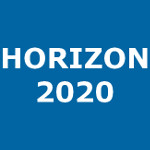Phonon-mediated crystal detectors with metallic film coating capable of rejecting a and ß events induced by surface radioactivity
Bandac, I.C. ; Barabash, A.S. ; Bergé,L. ; Bourgeois, C. ; Calvo-Mozota, J.M. ; Carniti, P. ; Chapellier, M. ; Decombarieu, M. ; Dafinei, I. ; Danevich, F.A. ; Dumoulin, L. ; Ferri, F. ; Giuliani, A. ; Gotti, C. ; Gras, P. ; Guerard, E. ; Ianni, A. ; Khalife, H. ; Konovalov, S.I. ; Loaiza, P. ; Madhukuttan, M. ; Demarcillac, P. ; Mariam, R. ; Marnieros, S. ; Marrache-Kikuchi, C.A. ; Martinez, M. (Universidad de Zaragoza) ; Nones, C. ; Olivieri, E. ; Pessina, G. ; Poda, D.V. ; Redon, T. ; Scarpaci, J.-A. ; Tretyak, V.I. ; Umatov, V.I. ; Zarytskyy, M.M. ; Zolotarova, A.S.
Resumen: Phonon-mediated particle detectors based on single crystals and operated at millikelvin temperatures are used in rare-event experiments for neutrino physics and dark-matter searches. In general, these devices are not sensitive to the particle impact point, especially if the detection is mediated by thermal phonons. In this Letter, we demonstrate that excellent discrimination between interior and surface ß and a events can be achieved by coating a crystal face with a thin metallic film, either continuous or in the form of a grid. The coating affects the phonon energy downconversion cascade that follows the particle interaction, leading to a modified signal shape for close-to-film events. An efficient identification of surface events was demonstrated with detectors based on a rectangular 20 × 20 × 10 mm3 Li2MoO4 crystal coated with a Pd normal-metal film (10 nm thick) and with Al-Pd superconductive bi-layers (100 nm-10 nm thick) on a 20 × 20 mm2 face. Discrimination capabilities were tested with 238U sources emitting both a and ß particles. Surface events are identified for energy depositions down to millimeter-scale depths from the coated surface. With this technology, a substantial reduction of the background level can be achieved in experiments searching for neutrinoless double-beta decay. © 2021 Author(s).
Idioma: Inglés
DOI: 10.1063/5.0050124
Año: 2021
Publicado en: Applied Physics Letters 118 (2021), [7 pp]
ISSN: 0003-6951
Factor impacto JCR: 3.971 (2021)
Categ. JCR: PHYSICS, APPLIED rank: 50 / 161 = 0.311 (2021) - Q2 - T1
Factor impacto CITESCORE: 6.6 - Physics and Astronomy (Q1)
Factor impacto SCIMAGO: 1.025 - Physics and Astronomy (miscellaneous) (Q1)
Financiación: info:eu-repo/grantAgreement/EC/H2020/742345/EU/Cryogenic Rare-event Observatory with Surface Sensitivity/CROSS
Tipo y forma: Article (Published version)
Área (Departamento): Área Física Atóm.Molec.y Nucl. (Dpto. Física Teórica)
Exportado de SIDERAL (2023-05-18-15:58:33)
Visitas y descargas
Idioma: Inglés
DOI: 10.1063/5.0050124
Año: 2021
Publicado en: Applied Physics Letters 118 (2021), [7 pp]
ISSN: 0003-6951
Factor impacto JCR: 3.971 (2021)
Categ. JCR: PHYSICS, APPLIED rank: 50 / 161 = 0.311 (2021) - Q2 - T1
Factor impacto CITESCORE: 6.6 - Physics and Astronomy (Q1)
Factor impacto SCIMAGO: 1.025 - Physics and Astronomy (miscellaneous) (Q1)
Financiación: info:eu-repo/grantAgreement/EC/H2020/742345/EU/Cryogenic Rare-event Observatory with Surface Sensitivity/CROSS
Tipo y forma: Article (Published version)
Área (Departamento): Área Física Atóm.Molec.y Nucl. (Dpto. Física Teórica)
Exportado de SIDERAL (2023-05-18-15:58:33)
Permalink:
Visitas y descargas
Este artículo se encuentra en las siguientes colecciones:
articulos > articulos-por-area > fisica_atomica,_molecular_y_nuclear
Notice créée le 2022-07-05, modifiée le 2023-05-19
